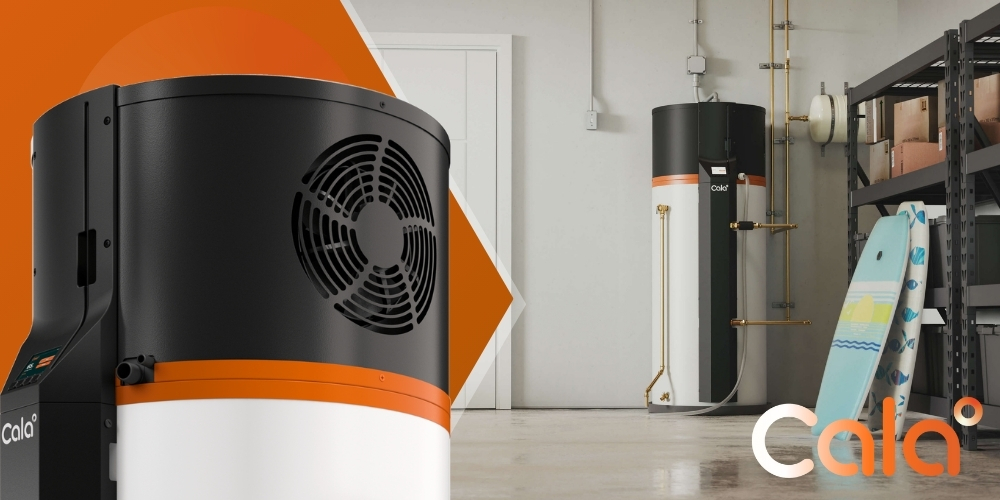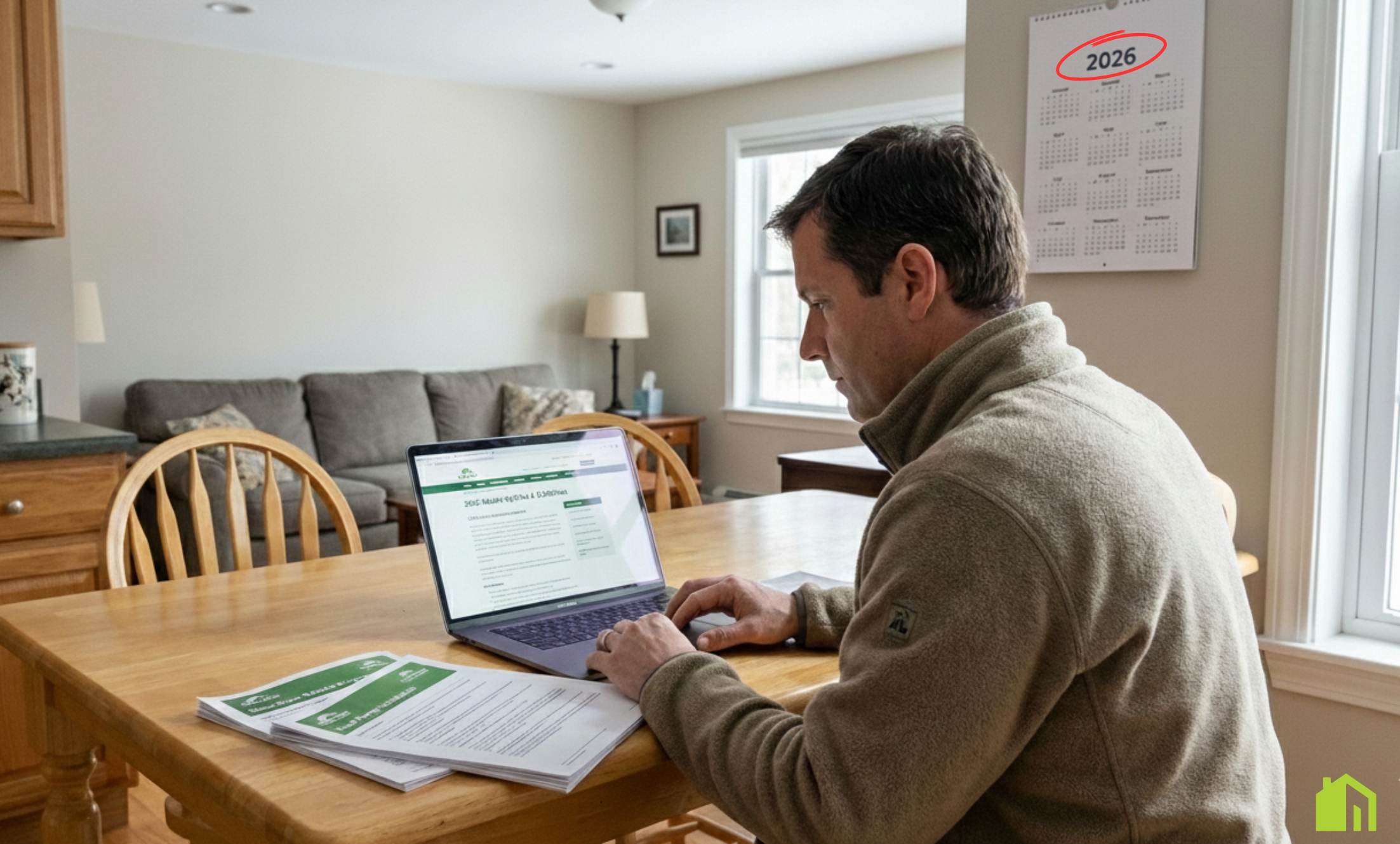Sub Panel vs. Main Panel: What’s the Difference?

Intelligent Heat Pump Water Heaters for Massachusetts Residential Homes — Why SumZero Selects Cala
By SumZero Energy Systems — Massachusetts’ #1 Heat Pump Installation Team
Picking a new water heater once involved a simple decision between gas and standard old electric, praying the hot water wouldn't be gone when there were two showers in a row. That's no longer the case. Now, the ideal solution for the majority of Massachusetts homes is a smart heat pump water heater (HPWH). This isn't the typical hybrid of which you might have heard, but a rather new breed of unit that adapts to your home's schedule, accommodates your energy usage, and maintains comfort consistently while consuming a lot less energy.
When homeowners want to have it exactly right the first time, our team is discerning about what products we choose. We consider the landscape and inspect the details before determining that they might work with Cala, a company that produces a high-technology hot water heater that modern homes need: intelligent, consistent, and efficient hot water — installed properly. This article describes why this alliance matters, how the tech benefits your home, what you should expect from our installation, and the handy information (rebates, credits, fit questions) homeowners inquire about daily.
Why This Alliance Is Important
(and What It Does for You)
There are two parts to a successful hot water solution:
Great technology
A system that makes you comfortable and uses less energy.
Great installation
Design, placement, airflow, electrical, condensate handling, commissioning, and long-term support.
Cala provides a tailor-built, smart HPWH platform. SumZero provides actual-world experience so that it works perfectly in real Massachusetts homes.
Together, we provide three things homeowners report wanting:
Accurate hot water at peak periods without guessing.
Cheaper monthly energy bills without compromise on comfort.
It is a future-proof solution that addresses the trend towards greener, all-electric homes.
Simply put: We get hot water. We know how to properly install heat pump technology. This combination makes a water heater upgrade a smart, long-term decision.
The Homeowner's Dilemma That We Are
If you have had a gas or a typical electric water heater, then you know the problems:
Hot-cold swings on hectic morning routines.
Higher electricity bills than hoped for.
No real insight, no real control.
A replace cycle that is experienced as "buying the same thing again."
Typical hybrid: Heat pump water heaters perform better, yet they still react: They delay until the tank cools off, then warm it up again. Homeowners averred they desire a system which thinks ahead—a unit which is a breeze to operate, handles peak load graciously, and does not make them compromise.
They fill that gap, which is why we work with them.

Why a Smart HPWH is Different
A standard electric water heater makes heat by passing an electric element, a giant toaster coil, through the tank. A heat pump water heater does it another way: it takes heat from the air it lives in and puts it into the water. Because it costs less energy to move heat than create it, heat pump water heaters run on much less power than typical electric ones. And they avoid burning gas, venting, and pollution.
A smart HPWH goes one step further:
It adapts to your home's schedule (morning showers, nighttime laundry) and preheats when demand isn't yet high.
You can use the app to check, plan, or increase hot water whenever you want.
It has a compressor that can change speed to fit what you need (not just "on/off").
It is achievable with a mixing valve holding water at the proper warmth for improved efficiency and then providing a sustained, safe warmth for usage. This is also possible with the availability of additional warm water at peak usage times.
It goes nicely with a contemporary home — primed for solar, time-of-use, and information you can view at a glance.
Result: more stable comfort, less energy use, improved control.
Why a Smart HPWH is Different
From what is visible on-site, there are three things certain for homeowners regarding the points of Cala:
1) Ease That Is Effortless
Consistent hot water at peak use is the ultimate test. Through forecasting demand and using a mixing valve, Cala maintains a steady supply. That results in less "uh oh" when two showers coincidentally happen at once or someone turns on the dishwasher.
2) Controls That You'll Ever Use
App functionality is key when done properly. You can check if there's hot water, turn up the heat for guests, view energy usage history, or simply set it and leave. As installers, we appreciate performance data — it allows us to address little issues before large ones form.
3) Future-Ready from Day One
Massachusetts is going towards clean, electricity-based homes. Cala's strategy combines well: it is scalable for solar power and accounts for time-of-use rates when needed. If you foresee solar energy at some time, or already have it, this water heater won't stop your home from being efficient.
4) A Company That Stands Behind Its Product
Cala backs every unit with a 10-year parts warranty and 3-year labor warranty — a strong sign they stand behind both the technology and the people who install it. At SumZero, we respect that kind of commitment because it mirrors our own approach: taking care of homeowners and supporting our partners with the same level of trust and accountability.
What SumZero Offers As Your Installer
(Why It Matters)
Even the best system won't work so great if installed wrong. Our task is getting your new HPWH working perfectly inside your home, not on a drawing board. This is what our approach is:
Right-size design.
We measure how much water your home needs and discuss the high-flow fixtures, filling bathtubs, and washer usage.
Best installation and ventilation.
HPWHs require air to make the heat move. We consider the room size, doors, vents, and — when necessary — ducting solutions for high performance and low noise.
Clean handling of electricity and condensate.
Safe power, tidy routing, and a trustworthy drainage plan are essential.
Commissioning correctly.
We don't just "turn it on." We verify performance, position the mixing valve, help you with the app, and verify your comfort objectives.
Rebates, credits, and financial assistance.
Mass Save, federal 25C, and the 0% HEAT Loan (if applicable) — we'll help you with that.
We take special care.
Our teams respect your home, protect your floors, and leave the place nicer than they found it.
Aftercare you can count on. Questions years down the road? We're here. The whole concept of a smart system is long-term confidence, not a one-day installation.
Costs, Incentives, and Lifetime Value
Two parts matter here: upfront cost and operating cost.
→ It is a better unit than a standard electric or simple hybrid. Tax credits and rebates make a big difference. A lot of Massachusetts homeowners rely on the 0% HEAT Loan for easier payments.
→ Month after month, the intelligent HPWH's effectiveness is where the value lies. By transferring (not creating) heat and by scheduling heating intelligently, homeowners consistently experience significant decreases in water-heating energy consumption — particularly relative to resistance electric, and many times relative to gas or delivered fuels when full costs are factors.
If you'd like figures specific to your home (household number, showering usage, energy costs), we'll do the math at your consult and provide you with a clear estimate of payback, lifetime cost saving, and the rebates for which you qualify.
Are Smarter Heat Pump Water Heaters Good for Your Home?
It is feasible for many Massachusetts homes. We will cover:
→ Household size and routines. Families with up to about 5 people usually do well with the standard setup; we will give advice for larger families or special situations.
→ Space and ventilation. We check the space, door vents, or ducts if necessary, and ventilation so the system operates properly.
→ Location. Basements are typical, as are utility rooms. As the unit functions, it removes air that feels like a dehumidifier — a typical plus for basements.
→ Electrical. We check panel capacity and proper wiring; no installation day surprises.
→ Future plans. Now or in the future for solar? Time-of-use rates? We'll put the system on so it grows with your home.
[[cta-heatpump]]
Why Is Cala Different from "Traditional Hybrids"?
✪ Control and Convenience:
Cala integrates intelligent tech with a mixing valve to remain comfortable, even when it is busy. Most standard hybrid units have simple modes and react only when the tank becomes chilled.
✪ Care and Trust:
Performance insights help you recognize problems early on and keep you on your feet for surprises. Traditional deployments are mostly "wait and see."
✪ Timing and Efficiency:
Variable driving and improved scheduling assist in energy saving with the maintenance of comfort. Ordinary hybrids operate more often and at undesirable times.
✪ Future-Ready
The design of the Cala accommodates with solar power, intelligent homes, and plans for utilizing electricity. Most older hybrids were not built for that usage.

What to Expect with SumZero
(From the First Call Through the First Shower)
✪ Talk & Pictures
We'll first glance at your objectives and take some fast photos of the current installation: the water heating unit, panel, and surrounding room.
✪ Right-Fit Design
We fit your hot water consumption and available spaces to a design which we endorse.
✪ Chaplain: A Comprehensive
Your quote is going to be transparent, includes information for installation, accessories, and a checklist for incentives. The paperwork assistance takes care of our end.
✪ Professional Installation
Licensed, insured, and detail-orientated. We dispose of the old unit, prepare the site, install and commission a new system, and leave the site tidy.
✪ App Introduction and Instructions
You'll discover how to see hot water supply, schedule increases, and view consumption — without being "technical."
✪ Support and Help
We're your long-term partner. Got a question? You call us — that's what homeowners deserve from the #1 heat pump installation company.
Common Questions We Get
(And Easy Answers)
Smart heat pump water heaters move heat from the surrounding air into the water instead of generating heat directly. This makes them up to three to four times more efficient than standard electric models. Cala’s intelligent system takes it further — it learns your household’s patterns, preheats before busy periods, and gives you app-based control to monitor or boost hot water anytime.
Most hybrid water heaters react when the tank cools. Cala predicts when your home will need hot water and heats proactively, saving more energy while maintaining comfort. It also features a variable-speed compressor, integrated mixing valve, and performance monitoring portal, giving both homeowners and installers a smarter, more reliable experience.
Savings depend on your energy source and usage, but many Massachusetts homeowners cut their water-heating costs by 50–70% when switching to a heat pump system. Cala’s intelligent controls add even greater efficiency. Add Mass Save® rebates, federal 25C tax credits, and potential 0% HEAT Loan financing, and most families see real payback within just a few years.
Yes — most Massachusetts homes are a great fit. Cala’s 65-gallon design comfortably serves households up to five people and can prepare up to 90 gallons ahead of peak use. The system needs adequate space and airflow, similar to a dehumidifier, and our team at SumZero handles every detail — from placement and ducting to electrical and performance checks.
SumZero Energy Systems is Massachusetts’ #1 heat pump installation team, trusted for precision, transparency, and high-quality service. We manage every step — design, installation, rebate paperwork, app setup, and long-term maintenance — so homeowners enjoy smarter comfort and lasting confidence. With SumZero, you’re not just buying equipment; you’re gaining a partner who stands behind it.
Why We Feel Secure Recommending This to Massachusetts Homeowners
We have a simple promise: we only install solutions that we would use in our own homes. Cala’s approach — being smart, having control, and being ready for the future — matches what we have learned from many talks with homeowners in the state. Together with SumZero’s careful installation standards and ongoing support, this water-heating upgrade makes sense right away and will last well with your home. Cleaner heat. Smarter comfort. Fewer bills.
Ready to Take the Next Step?

To learn more about Cala’s technology and vision, visit Cala Systems.
Understanding the Difference: Main Panel vs. Sub Panel Installation
When you're upgrading or expanding the electrical system in your Massachusetts home, it's essential to know the difference between a main panel and a sub panel. These panels play different roles, and each has specific advantages depending on your home's size, age, and energy needs.
A main panel is your home's central control point for electricity. It receives power from the utility company and distributes it through various circuits. A sub panel, on the other hand, acts as a satellite to the main panel. It helps distribute power to specific areas or additions, which can be a game changer during renovations or when installing energy-efficient equipment like heat pumps or EV chargers.
A sub panel doesn't provide more power — it reorganizes how electricity is delivered, improving safety and manageability in the process.
Why Consider Sub Panel Installation?
Homeowners in Massachusetts often install a sub panel when they're making home additions, upgrading kitchens, or adding advanced heating and cooling systems. Sub panels support a cleaner, more organized electric flow and give you more control over specific sections of your home.
- Ideal for garages, in-law suites, or backyard additions
- Supports high-demand appliances without overloading the main panel
- Makes troubleshooting and circuit labeling easier
- Reduces the need to run long electrical wires from the main panel
When a Sub Panel Becomes Essential
Sub panels aren't optional in some cases, especially if your main electrical panel is maxed out or outdated. If you're adding any of the following, sub panel installation might be necessary:
- A new HVAC system or heat pump
- EV charging stations
- A home workshop with industrial-grade tools
- A finished basement or attic conversion
Many older Massachusetts homes still operate on 100-amp service, which can limit modernization projects without a sub panel upgrade.
[[cta-heatpump]]
Sub Panel Upgrades vs. Replacing Your Main Panel
Once you understand the difference between your panels, the next step is deciding whether you need a sub panel upgrade or a full main panel replacement. Both projects serve different purposes, and making the right choice can save you time, money, and electrical headaches.
Signs You Need an Electrical Sub Panel Upgrade
If your main panel is still in good shape but you need more flexibility, a sub panel upgrade could be enough.
Here’s when it makes sense:
- You're out of breaker space in your main panel
- Planning a room addition or major remodel
- Want easier, localized control of circuits
- Installing equipment that requires a dedicated circuit
A sub panel can add structure without altering your entire setup.
When Your Main Panel Needs Replacement
Sometimes, upgrading the sub panel isn’t enough. If your home’s infrastructure is outdated, you might need a full overhaul of your electrical panel system.
Watch for these red flags:
- Constantly tripping breakers
- Dimming lights or inconsistent power
- Rust or corrosion inside the panel
- No more available slots — and the panel is already maxed out
Massachusetts building code also plays a role. Houses with electrical panels installed decades ago may not meet today’s safety standards. When that’s the case, installing a sub panel won't be code-compliant without addressing the main panel first.
Cost to Install a Sub Panel and What Influences It
One of the first questions homeowners ask is: how much does it cost to install a sub panel in Massachusetts? The answer depends on details like panel size, distance from the main panel, local permits, and whether additional upgrades are required.
On average, Massachusetts homeowners can expect to spend between $800 and $2,500 to install a sub panel — but prices can vary depending on project complexity and location.
Key Factors That Affect Sub Panel Installation Costs
The final cost for installing a new sub panel depends on several common factors specific to your property:
- Amp size: Panels typically range from 60 to 125 amps
- Wiring distance: The farther it is from the main panel, the more it costs
- Load calculations: Your current electrical use and panel capacity
- Permits and inspections: Town-by-town rules in Massachusetts affect final pricing
- Panel type and brand: Using durable panels from trusted brands like Mitsubishi Electric or Daikin can increase upfront cost but offer better longevity
How to Prepare for Sub Panel Installation
Thinking one step ahead will help reduce surprises during the installation process. Before beginning, ask yourself:
- Do I know where I want the sub panel located?
- Will the installation require wall access or ceiling cuts?
- Am I bundling this with other upgrades, like a heat pump or solar inverter?
Also, don't forget to explore rebates or incentives through programs like Mass Save that may offer support for energy upgrades requiring sub panels.
Takeaway for Massachusetts Homeowners
Choosing between upgrading with a sub panel or replacing your main panel isn’t just about cost — it’s about safety, future-proofing, and improving your home’s energy efficiency. With today’s smart appliances, electric vehicles, and sustainable heating options, your electrical setup plays a bigger role than ever before.
Make decisions based on your current home layout and future goals. A well-installed sub panel could be a stepping stone to finally getting the heated garage, workshop, or energy-saving heat pump you've been considering.
If you're unsure whether you're ready for a sub panel installation, consider having an energy assessment completed through Mass Save® to better understand your home's electrical limits and opportunities.
Get the flexibility and safety your upgraded home needs—our expert sub panel installation services make adding EV chargers, heat pumps, or new rooms a breeze for Massachusetts homeowners.
Upgrade Your Sub PanelYou Might Also Like…
Continue learning with handpicked articles that inform and inspire.
Not Sure Where to Start? We’ll Guide You
Let our experts design the right heating and cooling solution—customized for your comfort, your layout, and your energy goals. No pressure. Just clarity.
Request FREE ESTIMATE









